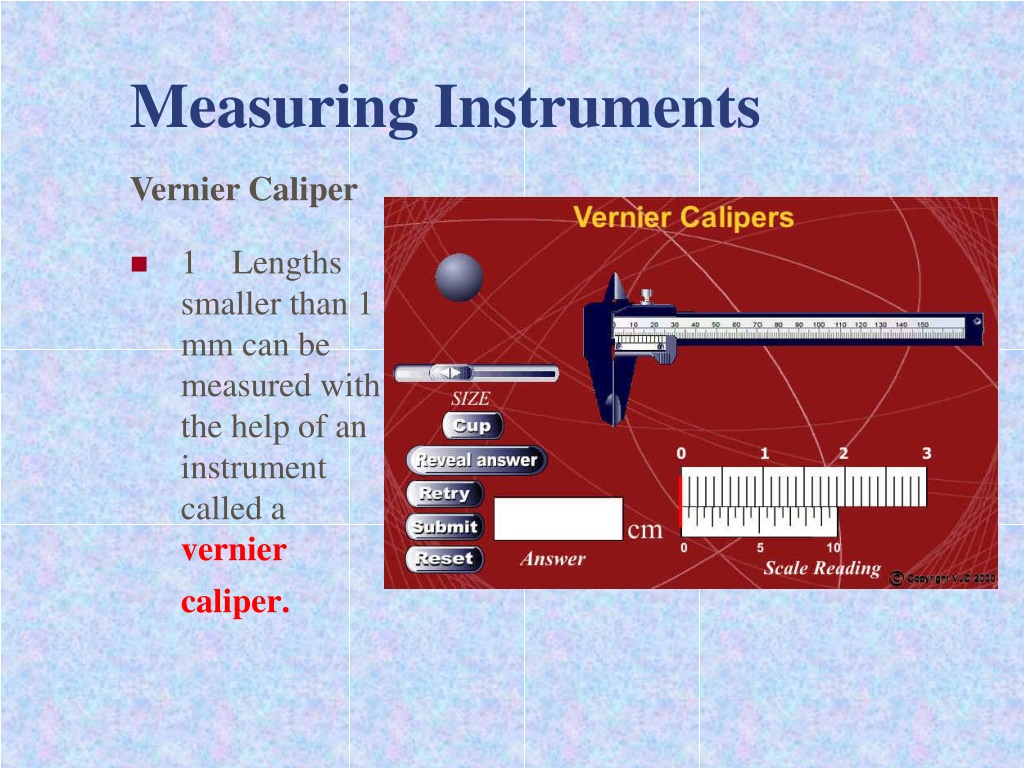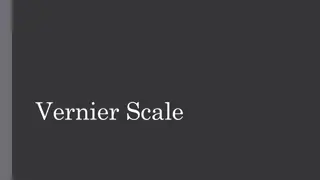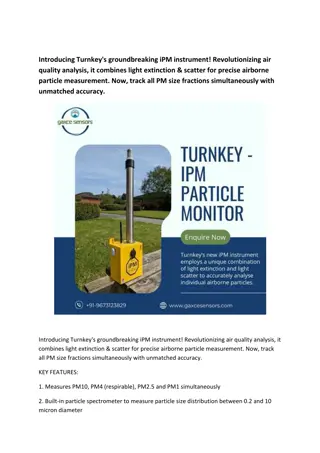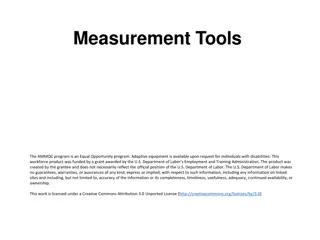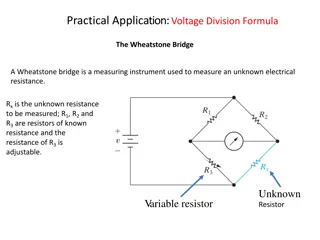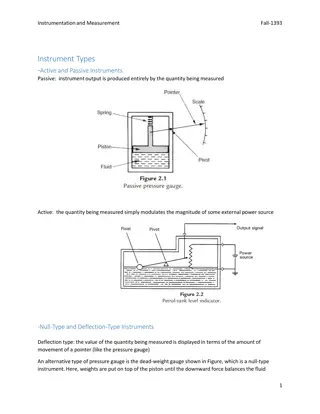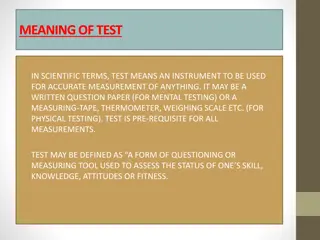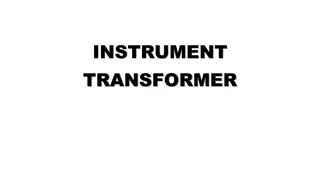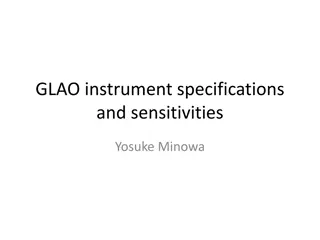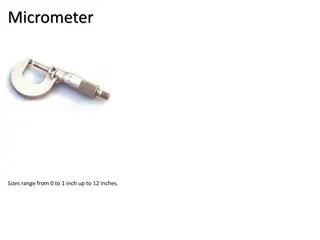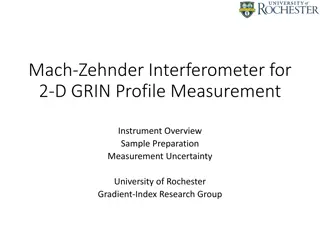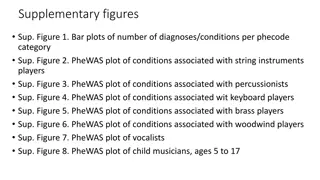Understanding Vernier Caliper: Precise Measurement Instrument
Vernier caliper is a precise measuring instrument used for measurements smaller than 1 mm with an accuracy up to 0.01 cm. It consists of two pairs of jaws for measuring linear dimensions, external, and internal diameters. The steps to measure with a vernier caliper involve aligning the main scale and vernier scale, determining readings on both scales, and adding them for the final measurement result.
Download Presentation

Please find below an Image/Link to download the presentation.
The content on the website is provided AS IS for your information and personal use only. It may not be sold, licensed, or shared on other websites without obtaining consent from the author. Download presentation by click this link. If you encounter any issues during the download, it is possible that the publisher has removed the file from their server.
E N D
Presentation Transcript
Measuring Instruments Vernier Caliper 1 Lengths smaller than 1 mm can be measured with the help of an instrument called a vernier caliper.
Measuring Instruments Vernier Caliper 2 A vernier caliper is used to measure an object with dimensions up to 12 cm with an accuracy of 0.01 cm.
Measuring Instruments Vernier Caliper 3 There are two pairs of jaws, one is designed to measure linear dimensions and external diameters while the other is to measure internal diameters.
Measuring Instruments Vernier Caliper 4. To measure with a vernier caliper, slide the vernier scale along the main scale until the object is held firmly between the jaws of the caliper. The subsequent steps are as follows.
Measuring Instruments Vernier Caliper (a)The reading on the main scale is determined with reference to the `0' mark on the vernier scale. The reading to be taken on the main scale is the mark preceding the Figure 1.10 shows that the '0' mark on the vernier scale lies between 3.2 cm and 3.3 cm. The reading to be taken on the main scale is 3.2 cm (the `0' mark on the vernier scale acts as a pointer). 1
Measuring Instruments Vernier Caliper (b) The reading to be taken on the vernier scale is indicated by the mark on the vernier scale which is exactly in line or coincides with any main scale division line. Figure 1.10 shows that the fourth mark on the vernier scale is exactly in line with a mark on the main scale. Thus the second decimal reading of the measurement is: Vernier scale reading = 4 x 0.01 cm = 0.04 cm 2
Measuring Instruments 0.04 Vernier Caliper 3.2 (c) The reading of the vernier caliper is the result of the addition of the reading on the main scale to the reading on the vernier scale.
Measuring Instruments 0.04 Vernier Caliper 3.2 (c) The reading of the vernier caliper is the result of the addition of the reading on the main scale to the reading on the vernier scale. Caliper reading = Main scale Reading + Vernier scale reading Thus the reading of the vernier caliper in Figure 1.10 is = 3.2 + 0.04 = 3.24 cm
Measuring Instruments Vernier Caliper 5. A vernier caliper has a zero error if the `0' mark on the main scale is not in line with the '0' mark on the vernier scale when the jaws of the caliper are fully closed
Measuring Instruments Vernier Caliper (a) Positive zero error Zero error = +0.04 cm.
Measuring Instruments 0.02cm 0.70 cm 0.72 cm
Measuring Instruments Vernier Caliper (b) Negative zero error Zero error = -0.02 cm.
6 mm ( 2 x 0.1 ) mm The result of measuring is ( 6 mm + 0.2 mm ) = 6.2 mm
The result of measuring is : ( 3 mm + ( 7 x 0.1 ) mm ) = 3.7 mm
Measuring Instruments Micrometer Screw Gauge 1 A micrometer screw gauge is used to measure small lengths ranging between 0.10 mm and 25.00 mm.
Measuring Instruments Micrometer Screw Gauge 2 This instrument can be used to measure diameters of wires and thicknesses of steel plates to an accuracy of 0.01 mm.
Measuring Instruments Micrometer Screw Gauge 3 The micrometer scale comprises a main scale marked on the sleeve and a scale marked on the thimble called the thimble scale.
Measuring Instruments Micrometer Screw Gauge 4 The difference between one division on the upper scale and one division on the lower scale is 0.5 mm.
Measuring Instruments Micrometer Screw Gauge 5 The thimble scale is subdivided into 50 equal divisions. When the thimble is rotated through one complete turn, i.e. 360 , the gap between the anvil and the spindle increases by 0.50 mm.
Measuring Instruments Micrometer Screw Gauge 6 This means that one division on the thimble scale is = 0.01 mm. 5 . 0 mm 50
Measuring Instruments Micrometer Screw Gauge 7 When taking a reading, the thimble is turned until the object is gripped very gently between the anvil and the spindle.
Measuring Instruments Micrometer Screw Gauge 8 The ratchet knob is then turned until a `click' sound is heard.
Measuring Instruments Micrometer Screw Gauge 9 The ratchet knob is used to prevent the user from exerting undue pressure.
Measuring Instruments Micrometer Screw Gauge 10 The grip on the object must not be excessive as this will affect the accuracy of the reading.
Measuring Instruments Micrometer Screw Gauge 11 Readings on the micrometer are taken as follows. (a) The last graduation showing on the main scale indicates position between 2.0 mm and 2.5 mm. Thus the reading on the main scale is read as 2.0 mm.
Measuring Instruments Micrometer Screw Gauge 11 Readings on the micrometer are taken as follows. (b) The reading of the micrometer screw gauge is the sun of the main scale reading and the thimble scale reading which is: 2.0 + 0.22 =2.22 mm
Measuring Instruments Micrometer Screw Gauge 11 Readings on the micrometer are taken as follows. (b) The reading on the thimble scale is the point where the horizontal reference line of the main scale is in line with the graduation mark on the thimble scale Figure 1.15(b) shows this to be the 22nd mark on the thimble scale, thus giving a reading of 22 x 0.01 mm = 0.22 mm.
Measuring Instruments Micrometer Screw Gauge 12 Readings on the micrometer are taken as follows. (a) Positive zero error In Figure 1.16, the horizontal reference line in the main scale is in line with the 4th division mark, on the positive side of the `0' mark, on the thimble scale. The error of +0.04 mm must be subtracted from all readings taken. Zero error = +0.04 mm
Measuring Instruments Micrometer Screw Gauge 13(b) Negative zero error In Figure 1.17, the horizontal reference line on the main scale is in line with the 3rd division mark, below the `0' mark of the thimble scale. Zero error = -0.03 mm
